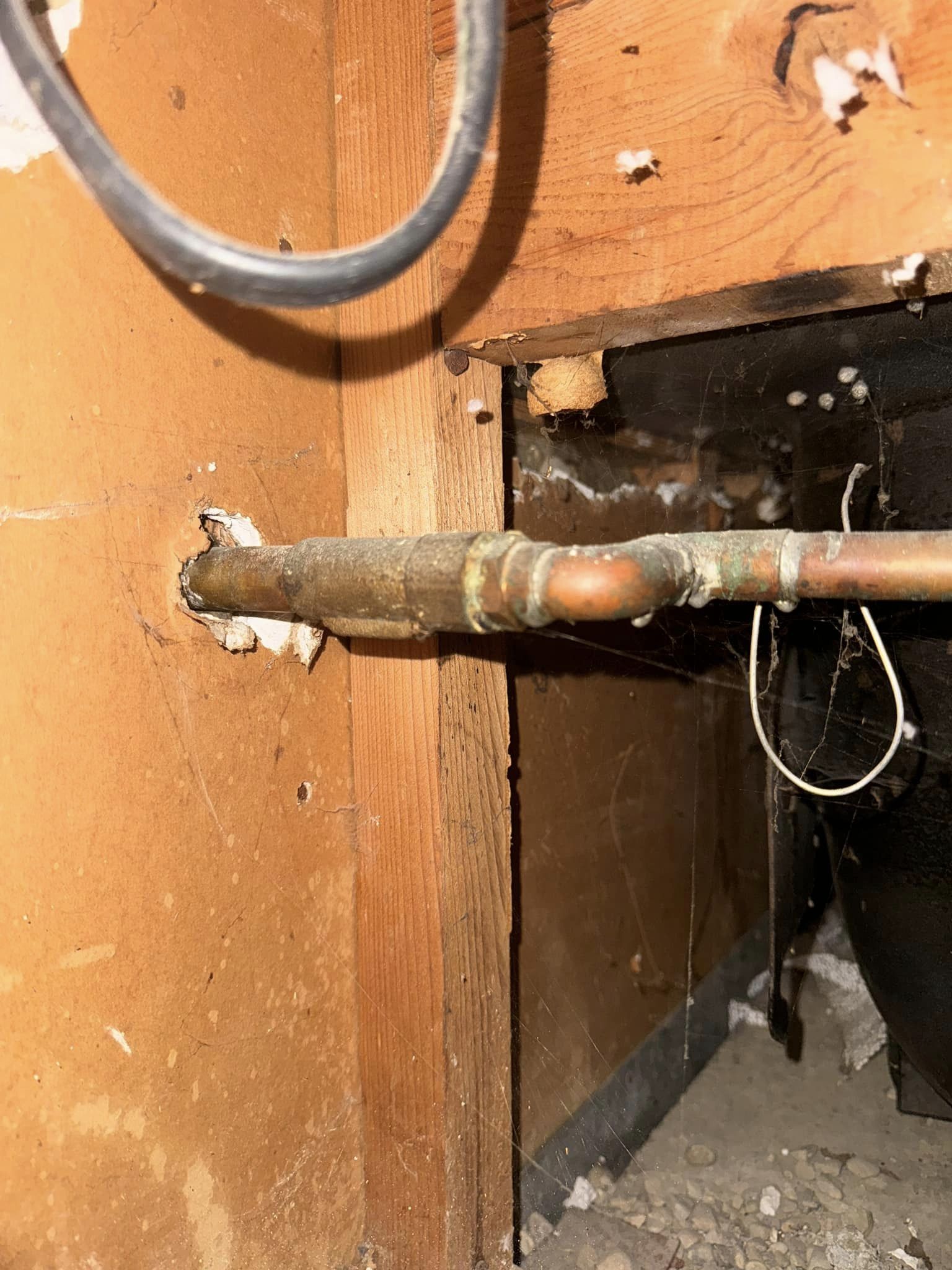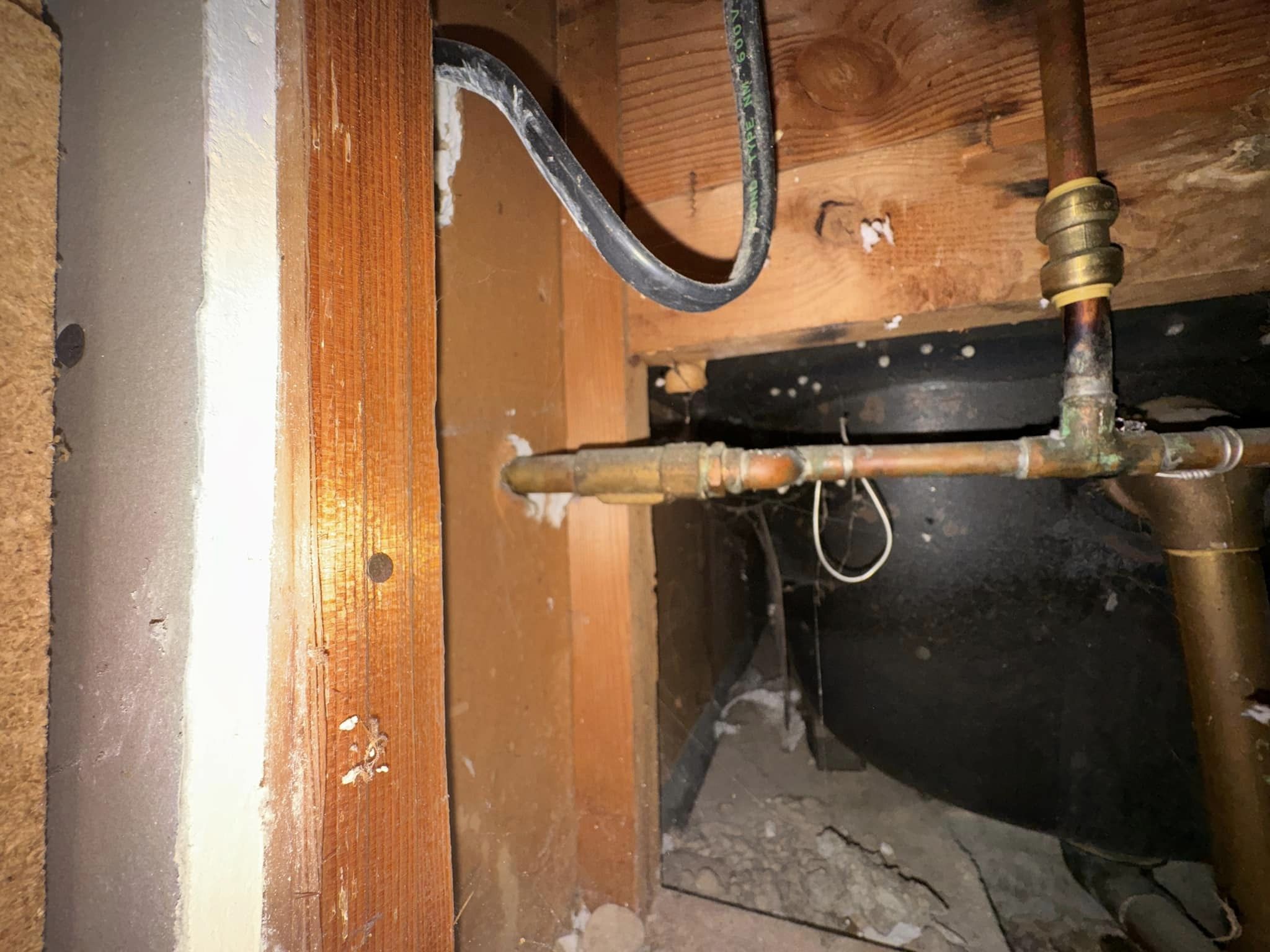How can I add a shutoff valve to prevent my outdoor spigot from leaking during winter, especially with limited space for a frost-proof spigot?
11 months ago
Last Updated: July 26, 2024
Hey, so I’ve got a bit of a situation with my outdoor spigot – it’s leaking and I’m thinking of adding a shutoff valve to fix it. I’m up here in the north and I really want to be able to turn off the outside spigots during the winter to avoid any issues.
I’ve been checking out some how-to videos on YouTube and it seems pretty straightforward, but I’m a bit unsure about the frost-proof spigots. They look pretty long and I’m not sure if they’ll fit in the space I have. Any suggestions on specific products to use would be greatly appreciated.


Trim it and attach a ball valve
I see you have one sharkbite fitting there. Consider adding a few more. Angle your spigot downwards. Apply caulk around the area where you insert it through the house. Having a second person assisting with this project is definitely beneficial.
Sharkbites are not a good idea
Doesn’t a sharkbite joint rotate?
Something similar.
I’ll sketch something once the child is asleep. But that photo from Lowes is all about sharkbites. So no, not like that. How good are you at soldering?
💯
Has a long history of not succeeding, especially when the pipes are not prepared correctly.
If soldering is not an option, compression fittings could work. However, I find soldering to be the easier choice. By the way, I’m not a plumber, just a 61 year old DIY enthusiast.
Personally, I think compression fittings are a better choice than sharkbite. Soldering can be quick and simple as long as you prepare properly!
Oh yeah, I actually tried out the sharkbite once under my bathroom sink. I was really impressed with how easy it was to install, but I wasn’t a fan of how the fittings would move around unless they were on an elbow after the installation.
I’ve witnessed a number of disasters. Blowouts and such. They do have their uses, don’t get me wrong haha just not very many in my view. Especially not in a completed area or hidden behind a wall
By the way, if you ever notice, pex fittings can rotate inside pex pipe. It totally freaked me out when I first noticed it haha
I put in a quarter turn valve in the basement before the sharkbite. I have to admit, I’m still a bit uneasy about them being there, but I do trust that they will generally hold if installed correctly. They weren’t my first choice at the time, but I was a bit limited in my options since it was our only bathroom and I couldn’t keep it out of order for too long.
Absolutely ! We just have to make do with what we have sometimes
Frost-free spigots are designed to be long on purpose. The valve seat is positioned at the threaded end rather than the handle end. This helps keep the water inside or close to the warmer interior, away from the elements.
No content
Is spot on. So basically, it seems like installing a shutoff valve and a new spigot would be the ideal solution. Considering that the bathtub and toilet water are also in this area, I don’t think there would be many issues during winter.
You can find hoses in various lengths, such as 4 inches, 6 inches, and 9 inches. It’s a small investment for added protection. Consider installing a ball valve shut off and frost free hose if you have easy access, and use threaded connections for easier replacement. It’s a personal choice, especially to avoid having to pull Sheetrock to solder. Make sure to check for parts to repair the plastic anti-siphon valve if needed, as plastic can become brittle over time.
A shorter hose defeats the purpose. Frost free hose bibs are designed to prevent freezing by draining water far from the cold. Short hoses can cause water to freeze as they draw heat out. It’s a battle between warmth inside and cold outside. Short hoses make it easy for nature to win. Adding a shutoff valve on the supply side makes it harder for heat to reach the cold end, providing more protection.
For us plumbers, it’s pretty straightforward. I always suggest starting with a shut off valve, followed by a tee. On the branch side of the tee, add another valve for draining, then a new frost free hose bib, just solder it on.
You may need to enlarge the hole.
Seal the hole with silicone once the job is done.
Avoid using shark bite fittings.
– advice from a plumber
You can find a shorter version of the frost free valve plumbing supply or check Amazon, they might have them in stock
You don’t have to replace the entire spigot, just take it apart and switch out the o-rings. You can do everything from the outside. I got a variety of sizes for around $2.
Hey , I was thinking of adding a shutoff valve anyway, so might as well switch out the spigot too. I already checked out the repair kits, great suggestion!
They offer frost-free spigots in varying lengths, I think. I opted for ball valves on mine for this very reason. I shut off the valve when winter comes.
Just install a shut off valve, no need to worry about the frostproof one. The shut off valve should be sufficient.